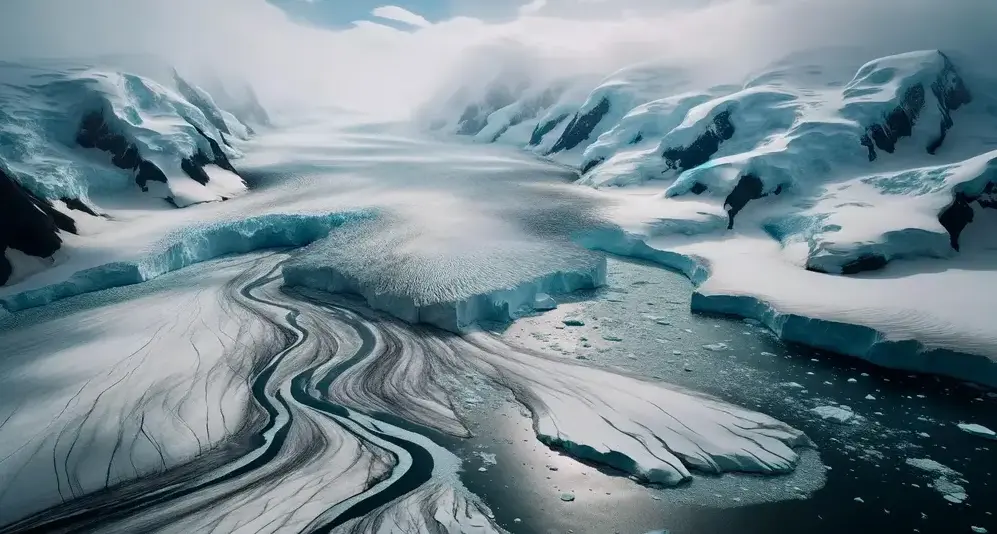The Arctic could be free of ice within a decade
- March 6, 2024
- 0
The Arctic could experience summer days with almost no sea ice in the next few years, according to a new study led by the University of Colorado at
The Arctic could experience summer days with almost no sea ice in the next few years, according to a new study led by the University of Colorado at

The Arctic could experience summer days with almost no sea ice in the next few years, according to a new study led by the University of Colorado at Boulder. Findings published in the journal Nature Reviews Earth and Environmentsuggests that the Arctic’s first ice-free day could come 10 years earlier than previous predictions, which focused on when the region would remain ice-free for a month or more. The trend will remain unchanged in all future emissions scenarios.
By mid-century the Arctic is likely to go a month without sea ice in September; During this period, sea ice coverage of the region will be minimal. By the end of the century, the ice-free season could last several months per year, depending on future emissions scenarios. For example, in a high-emission or extreme scenario, the planet’s northernmost region could become permanently ice-free, even during some winter months.
For scientists, the fact that the Arctic is ice-free does not mean that there will be no ice in the water.
Instead, the researchers say the Arctic is ice-free when there is less than 1 million square kilometers (386,000 square miles) of ice in the ocean. This threshold is less than 20% of the minimum seasonal ice cover in the region in the 1980s. In recent years, the sea ice area in the Arctic Ocean has been approximately 3.3 million square kilometers, at least in September.
Alexandra Jan, an associate professor in the Department of Atmospheric and Oceanic Sciences and faculty member at CU Boulder’s Institute for Arctic and Alpine Research, decided to analyze the existing literature on sea ice forecasts. He and his colleagues also analyzed sea ice cover data from computational climate models to predict how the Arctic might change from day to day in the future.
They found that the first day when sea ice extent falls below the 1 square kilometer threshold occurs on average four years earlier than the monthly average, but can also occur up to 18 years earlier.
“When it comes to reporting what scientists expect in the Arctic, it is important to estimate when we might see the first ice-free conditions in the Arctic reflected in daily satellite data,” Yang said. said.
The team predicts that the Arctic Ocean could become ice-free for the first time in late August or early September between the 2020s and 2030s under all emissions scenarios.
The main cause of sea ice loss is greenhouse gas emissions, Yang said. Shrinking snow and ice cover is exacerbating ice melting and warming in the Arctic by increasing the amount of heat from sunlight absorbed by the ocean.
Reducing sea ice is having a significant impact on Arctic animals that rely on sea ice to survive, including seals and polar bears. Additionally, as the ocean warms, researchers worry that non-native fish could move into the Arctic Ocean. The impact of these invasive species on local ecosystems remains unclear.
Loss of sea ice also poses a risk to communities living near the coastal zone. Sea ice plays an important role in buffering the impact of ocean waves on coastal lands, Yang said. As sea ice retreats, ocean waves will grow larger, causing coastal erosion.
While the release of Arctic ice is inevitable, Yang said future emissions levels will determine how often such conditions occur. According to the intermediate emission scenario in which society is currently moving, the Arctic can become ice-free only in late summer and early autumn, that is, from August to October. But under the highest emissions scenario, the Arctic could remain ice-free for up to nine months by the end of this century.
“This would transform the Arctic into a completely different environment, from a white summer Arctic to a blue Arctic. So even if ice-free conditions are inevitable, we need to keep emissions as low as possible to avoid long-term ice-free conditions. “, – said Ian.
The good news: Arctic sea ice is persistent and can return quickly when the atmosphere cools.
“Unlike the Greenland ice sheet, which took thousands of years to build, even if we melted all of the Arctic sea ice, we could figure out how to remove CO2 in the future.with If the atmosphere can reverse warming, sea ice will return within a decade, Yang said.
Source: Port Altele
As an experienced journalist and author, Mary has been reporting on the latest news and trends for over 5 years. With a passion for uncovering the stories behind the headlines, Mary has earned a reputation as a trusted voice in the world of journalism. Her writing style is insightful, engaging and thought-provoking, as she takes a deep dive into the most pressing issues of our time.